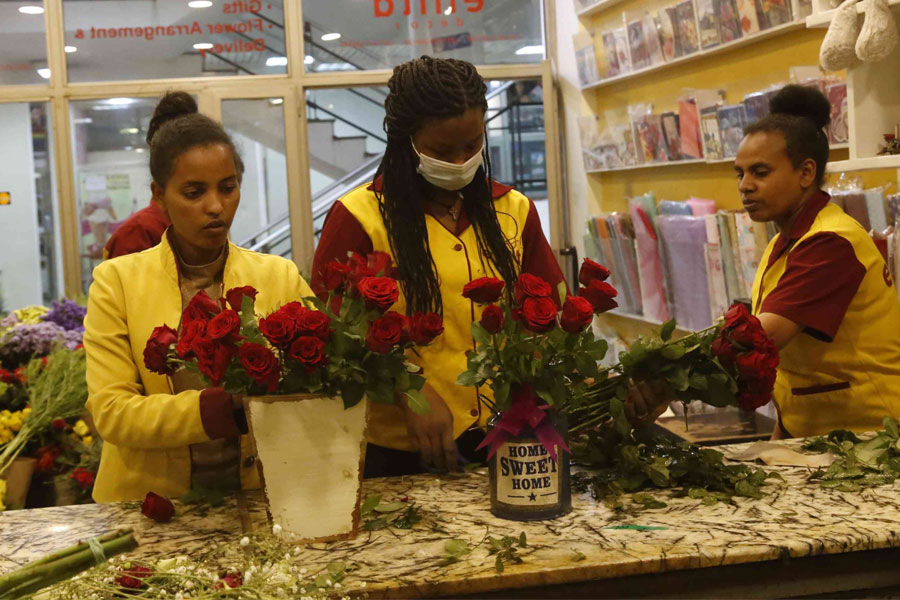
Fortune News | Mar 09,2024
The once-thriving Tal Flower Farms and Tana Flora have fallen into silence in the lush terrains of Amhara Regional State. These flower farms, which exported millions of stems worldwide, have succumbed to a confluence of snags, leading to their closure and leaving hundreds jobless. Tal Flower Farms, in particular, saw its operations grind to a halt after eight successful years, unable to overcome market contraction, input shortages, and severe security concerns. The farm's saga mirrors a distressing downturn in Ethiopia's flower export sector, which has recently reported a significant decline in earnings and volume, exposing the fragility of an industry once buoyed by global demand.
The situation at Tal Flower Farms and Tana Flora manifests the volatile nature of agribusiness, where external shocks like the COVID-19 pandemic exacerbate underlying issues such as security instability and operational barriers. The termination of operations on these farms has impacted the local economy and uncovered the sector's vulnerability to domestic and international pressures. The story is further complicated by labour disputes and allegations of unpaid wages, indicating deeper systemic problems within the industry. Despite these, some industry stakeholders remain optimistic about the future. Ministry of Agriculture officials point to a potential silver lining through adopting sustainable practices and a shift towards maritime exports, which could lower costs and environmental impact. This focus on sustainability, coupled with recent policy changes aimed at easing foreign currency restrictions for importers, offers a pathway for recovery in the face of adversity.
The transition of some farms from flower to herb and vegetable production tells an adaptation to market demands. Exemplified by companies like Joytech Plc, the moves signal the industry's attempt to diversify in response to changing global consumer preferences. The move towards crops with shorter growth cycles and perennial demand could offer a more stable revenue stream and address the sector's seasonal vulnerabilities. However, looming over this potential resurgence are international standards and regulations, particularly the European Union's impending inspection requirements for flower exports. The threat of failing these inspections due to pests like the False Codling Moth adds another layer of complexity to the industry's troubles. It calls for technological and procedural advancements to meet stringent global standards, ensuring the sector's sustainability and growth.
The floriculture sector, once touted as embodying hope of export potential, now stands at a crossroads. The combined effects of internal upheavals and external pressures have exposed the fragility of this lucrative industry. Yet, amidst the turmoil, there lies an opportunity for reinvention. Experts reckon that by embracing sustainable practices, diversifying crop production, and adapting to global market demands, the domestic horticulture industry can steer the uncertainties of the global flower market. The path forward requires a relentless effort to address the industry's systemic issues, ensuring its survival in the years to come.
You can read the full story here
PUBLISHED ON
Feb 10,2024 [ VOL
24 , NO
1241]

Fortune News | Mar 09,2024

Agenda | Oct 01,2022

Agenda | Feb 10,2024

Fortune News | Sep 24,2022

Commentaries | Oct 28,2023

Dec 22 , 2024 . By TIZITA SHEWAFERAW
Charged with transforming colossal state-owned enterprises into modern and competitiv...

Aug 18 , 2024 . By AKSAH ITALO
Although predictable Yonas Zerihun's job in the ride-hailing service is not immune to...

Jul 28 , 2024 . By TIZITA SHEWAFERAW
Unhabitual, perhaps too many, Samuel Gebreyohannes, 38, used to occasionally enjoy a couple of beers at breakfast. However, he recently swit...

Jul 13 , 2024 . By AKSAH ITALO
Investors who rely on tractors, trucks, and field vehicles for commuting, transporting commodities, and f...

Nov 1 , 2025
The National Bank of Ethiopia (NBE) issued a statement two weeks ago that appeared to...

Oct 25 , 2025
The regulatory machinery is on overdrive. In only two years, no fewer than 35 new pro...

Oct 18 , 2025
The political establishment, notably the ruling party and its top brass, has become p...

Oct 11 , 2025
Ladislas Farago, a roving Associated Press (AP) correspondent, arrived in Ethiopia in...